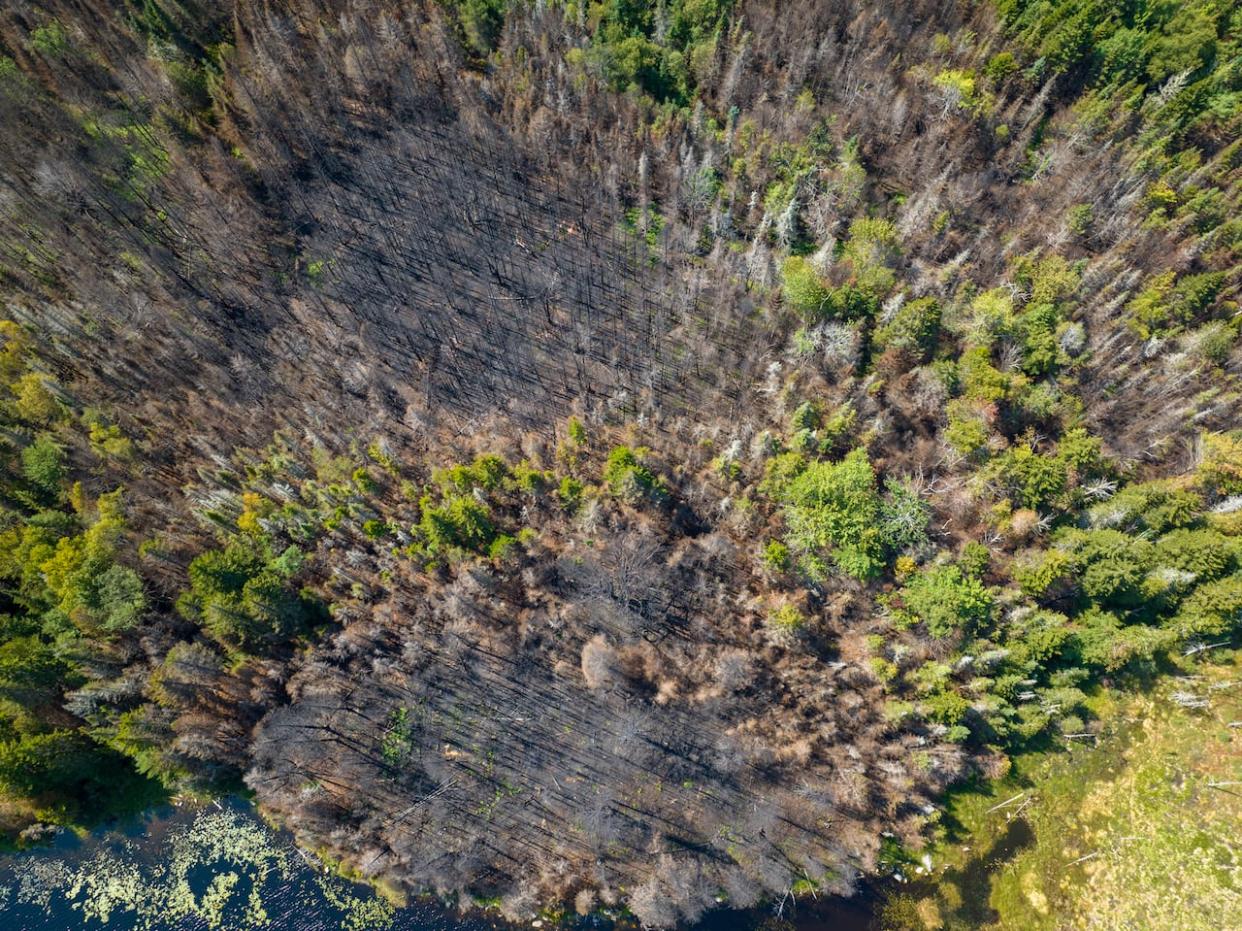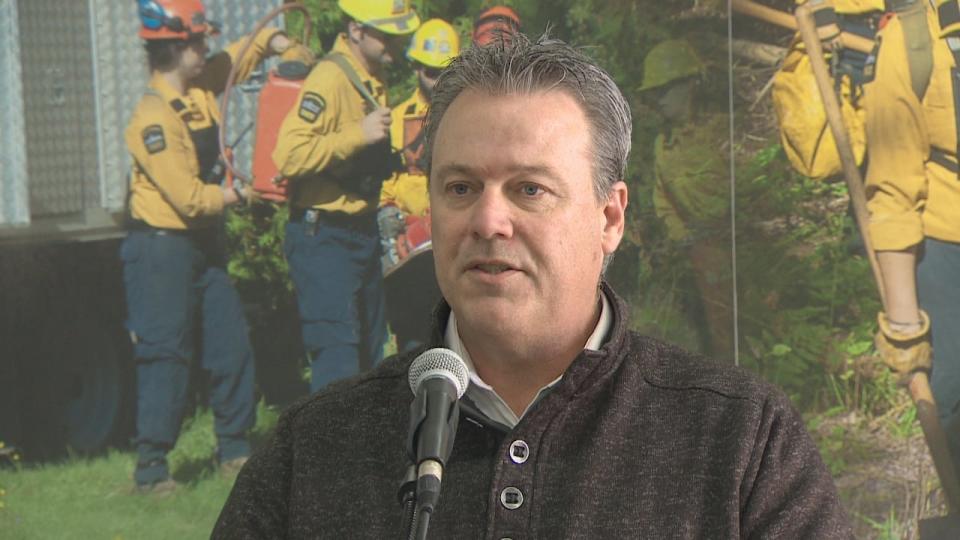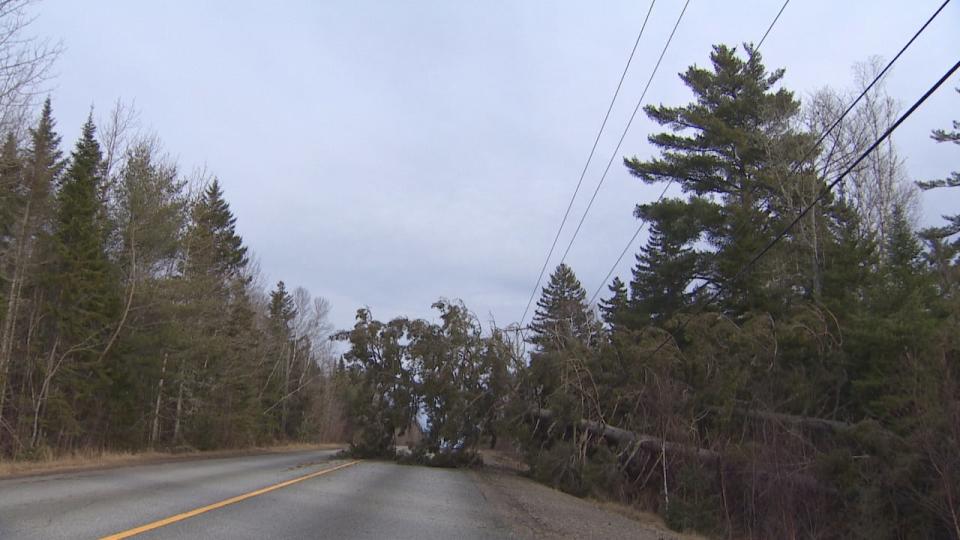As wildfire season starts, N.B. ready to take firefighting to 'whole new level'

Fire officials are preparing as wildfire season begins in New Brunswick, with teams and equipment situated around the province.
"But we also need people to be vigilant and proactive," Roger Collet, a wildfire prevention officer, said at a news conference Tuesday.
He asked New Brunswickers to check burning conditions before lighting any fires and to take action to protect their property. This includes moving wood piles away from homes, clearing brush from around their properties, and removing debris from gutters and roofs.
"You have the power to make a difference," Collet said.
Tuesday was the official first day of wildfire season. Collet said the fire season begins in the southern parts of the provinces and progresses north as summer begins.

Roger Collet, a wildfire prevention officer with the province, said there are things people can do to protect their properties. (Pat Richard/CBC)
Data released by the province shows that New Brunswick's 209 wildfires last year amounted to fewer than the 10-year average of 246. However, the Stein Lake Fire near Saint Andrews in May nearly doubled the amount of land that was burned in wildfires.
In 2023, about 500 hectares of the 857 hectares burned were from the Stein Lake Fire.
"It's a poignant reminder of how swiftly things can spiral out of control," Collet said.
The Stein Lake fire began on May 28 from an ATV fire in the woods near Chamcook and Bocabec. Along with evacuation orders for the area, the public was also asked to stay out of the woods across New Brunswick.
At the news conference Tuesday, Natural Resources Minister Mike Holland was asked if he would consider this measure again in 2024.
WATCH | 'The hazard is always there':
Holland said he errs on the side of caution and might issue such an order again if conditions were bad, but only if recommended by fire officials based on scientific criteria.
"We're certainly not going to come down with a hard hammer because we trust that New Brunswickers are going to use care and caution," Holland said, adding that he wants people to continue enjoying the outdoors while being responsible with fires.
Holland also spoke highly of the province's wildfire co-ordination centre in Fredericton, which reminds him of the aircraft in the Star Trek TV series.
The centre first, which first operated last year, has large screens where fire officials can monitor weather and environmental data in real time.

Natural Resources Minister Mike Holland said he would consider using a ban on activity in the woods again if fire conditions get bad this year. (Pat Richard/CBC)
"It's spectacular," Holland said. "It's like the deck of the Starship Enterprise — spectacular.
"When I toured it, I thought, this is taking firefighting to a whole new level. It's almost reading and reacting in advance to where there's issues and being able to target them in an early fashion."
While the Stein Lake Fire took a long time to burn out, Collet said there's no risk of "zombie fires" that have stayed burning over the winter.
"We've had so much rain last fall, there's no way anything's making it through the winter."
While fire conditions were extreme across much of Canada last year, New Brunswick was not the only Maritime province to see a large fire. Nova Scotia had two major wildfires near Upper Tantallon and Shelburne.
Downed trees as wildfire threat
Fire Chief Kevin Theriault's Saint Andrews department also oversees the surrounding areas of town where the Stein Lake Fire took place, and said it was a busy week for his crew.
"The Stein Lake Fire was definitely above average," Theriault said, adding that he fears a dry and hot summer coupled with the risk of downed trees in the region from many storms through the fall and winter.

It was a destructive fall and winter for trees in southwestern New Brunswick following many storms, such as the windstorm before Christmas that knocked down many trees. (Ed Hunter/CBC)
"If it dries out, that's a lot of wood available for fuel, it's actually pretty scary. So hopefully it's not too dry this year."
When asked about the wildfire threat from the downed trees, Collet said officials are starting to monitor this, but the threat from tress downed recently will likely come in the next few years. Many of the trees are still green or rooted, he said, so aren't dry enough to burn this season.
"This year is probably not the worst, but it's still a hazard."
Holland also added that conversations are beginning in government about possible ways to remove the downed trees and use them for benefit in New Brunswick's private forestry industries.
"Is there fibre related to the forestry industry that can be salvaged, is there permits that can be provided to clean up?"
It's too early to determine which areas this tactic might work in, Holland said, but the Fundy coast was a possibility since it was hit especially hard by storms.


